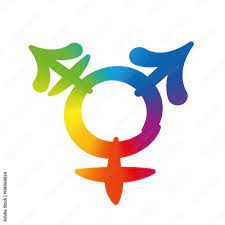In today’s world, discussions surrounding gender identity and gender expression are more important than ever. These concepts help us understand who we are and how we present ourselves to the world. As society continues to evolve, embracing a broader understanding of gender can foster acceptance and respect for everyone, regardless of their identity or expression. This article will explore the nuances of gender identity and expression, the spectrum of gender, and how we can support one another in celebrating this diversity.
Understanding Gender Identity: What Does It Mean?
Gender identity refers to an individual’s internal understanding of their own gender, which may or may not align with the sex they were assigned at birth. For many, gender identity is a deeply personal experience that encompasses feelings, thoughts, and societal roles. It can be binary (male or female), non-binary, genderqueer, or any other identity that an individual feels resonates with their sense of self. Recognizing this diversity is crucial in promoting a more inclusive atmosphere for all.Sissy Breast ImplantsSudden Onset Gender Dysphoria
The importance of recognizing and respecting each person’s gender identity cannot be understated. When people are acknowledged for who they truly are, it fosters a sense of belonging and acceptance, which can lead to improved mental health and overall well-being. Conversely, invalidating someone’s gender identity can lead to feelings of alienation and distress, making it essential to approach these discussions with empathy and understanding.
Gender Expression: How We Show Our True Selves
Gender expression is how individuals convey their gender identity to the world through appearance, behavior, and personal style. This can include clothing choices, hairstyles, mannerisms, and even vocal tones. While some people express their gender in a way that aligns with societal expectations—such as a woman wearing dresses or a man having short hair—others might choose expressions that challenge or defy traditional norms.
Understanding gender expression is key to recognizing that everyone has the right to present themselves as they feel comfortable. Whether someone opts for a more feminine, masculine, or androgynous presentation, their choices should be respected. It’s essential to celebrate this form of self-expression as it contributes to the rich tapestry of human experience, allowing individuals to exist authentically in their environments.
The Spectrum of Gender: More Than Just Male and Female
The traditional binary view of gender—male and female—does not encompass the full range of human experience. Gender exists on a spectrum, with numerous identities that fall outside of the binary classification. For instance, non-binary, genderfluid, and agender individuals may experience their gender differently, and these identities are just as valid as male and female. The recognition of this spectrum is vital in promoting understanding and acceptance.
As society becomes increasingly aware of the complexities of gender, it is essential to approach these identities with openness and curiosity. Acknowledging that everyone’s experience of gender is unique can help break down stereotypes and foster inclusivity. This understanding allows for a broader appreciation of the diverse ways people navigate their identities, ultimately enriching our communities.
Why Gender Identity Matters in Today’s Society
Recognizing and affirming gender identity holds immense significance in contemporary society. In an era where discussions about equality and human rights are paramount, understanding gender identity is a crucial aspect of advocating for the rights of marginalized groups. Gender identity can influence various facets of life, including access to healthcare, employment opportunities, and social acceptance.
Moreover, validating individuals’ gender identities can have profound impacts on their mental health and overall quality of life. Research shows that when people feel accepted for who they are, they experience lower rates of anxiety and depression. By prioritizing the importance of gender identity, we can work towards creating a more inclusive and supportive environment for everyone, fostering compassion and understanding across diverse communities.
Navigating Gender Pronouns: A Quick Guide
Using the correct pronouns is an essential aspect of respecting someone’s gender identity. Pronouns are linguistic tools that reflect an individual’s identity, and getting them right can make a world of difference in how a person feels about themselves. Commonly, people use “he/him” for males and “she/her” for females. However, many may prefer gender-neutral pronouns, such as “they/them” or even neopronouns like “ze/hir.”
If you’re unsure about someone’s pronouns, it’s perfectly okay to ask politely! A simple, “Hi! What pronouns do you use?” can open up an affirming dialogue. Also, sharing your own pronouns can create a comfortable environment for others to do the same. The key is to approach the conversation with respect and an open mind—every effort counts in making others feel validated.
Intersectionality: How Identity Shapes Our Experiences
Intersectionality is a term used to describe how various aspects of a person’s identity—such as race, class, gender, and sexual orientation—interact and shape their experiences and social standing. Individuals experiencing multiple marginalized identities may face compounded discrimination and unique challenges that others may not. Understanding intersectionality is crucial for recognizing the diverse experiences within the LGBTQ+ community and beyond.
For example, a Black transgender woman may encounter different societal barriers than a white cisgender woman. Acknowledging these complexities helps us understand the full scope of oppression and privilege in society. By embracing an intersectional approach, we can better advocate for the rights and needs of all individuals, promoting a more equitable world.
Supporting Others: Tips for Allies and Friends
Being an ally means actively supporting individuals in their journey of self-discovery, especially those navigating gender identity and expression. One way to do this is by listening—creating space for someone to share their experiences without judgment. Show genuine interest and compassion, and remember that everyone’s journey is unique.
Additionally, educating yourself about gender identity and expression can be incredibly helpful. Familiarize yourself with terminology, issues faced by marginalized groups, and ways to challenge discrimination. The more you know, the better equipped you’ll be to support others effectively. Allies play a pivotal role in advocating for change and creating a more inclusive community.
Celebrating Diversity: Embracing All Gender Expressions
Embracing and celebrating diversity in gender expression is essential to fostering a vibrant, inclusive society. By recognizing that everyone has the right to express their gender in a way that feels authentic to them, we can create spaces where individuals feel free to be themselves. Celebrating diversity can take many forms, including supporting LGBTQ+ events, engaging in community discussions, and advocating for equitable policies.
Moreover, showcasing diverse role models in media, literature, and politics can help normalize various gender identities and expressions. When individuals see themselves represented in positive ways, it can inspire confidence and a sense of belonging. Embracing this diversity not only enriches our communities but also paves the way for future generations to navigate their identities with pride.
In conclusion, understanding gender identity and gender expression is vital to creating a more inclusive and compassionate society. By recognizing the spectrum of gender, respecting individuals’ pronouns, and championing diversity, we can work together to support one another in our unique journeys. Embracing these concepts not only benefits individuals but also strengthens communities, making the world a more accepting place for everyone.


